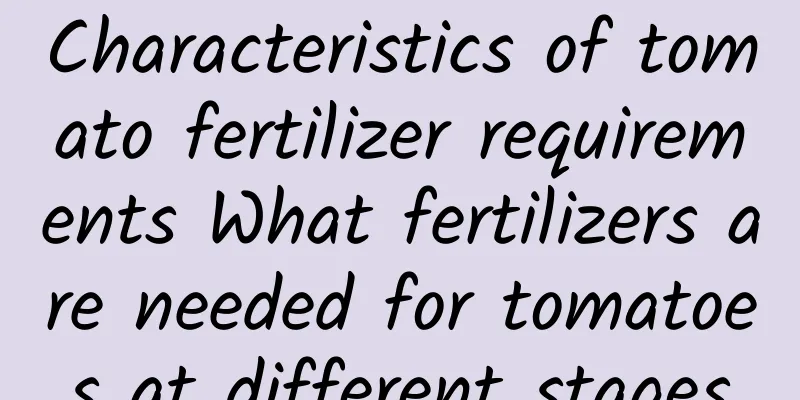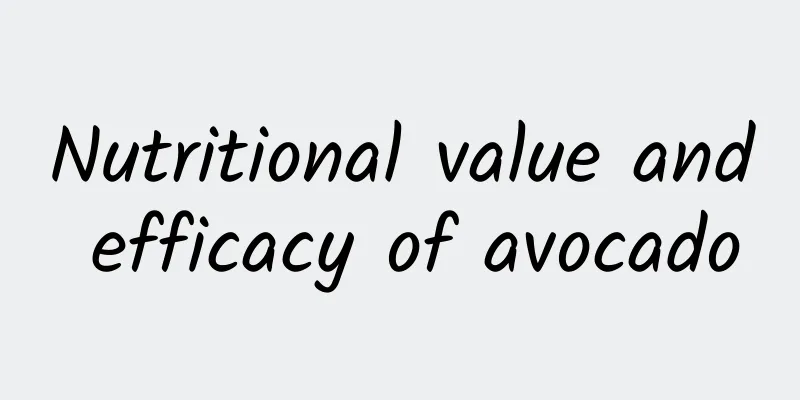Characteristics of tomato fertilizer requirements What fertilizers are needed for tomatoes at different stages

|
Here are some characteristics of tomato fertilizer requirements, which are also easy to manage during planting: Characteristics of tomato fertilizer requirements:The amount of nutrients absorbed by tomatoes varies at different growth stages, and the amount absorbed increases with the growth and development of the plant. In the seedling stage, nitrogen is the main nutrient absorbed, and as the stem thickens and grows, the demand for phosphorus and potassium increases. In the early stage of fruiting, nitrogen accounts for 50% of the three main nutrients (nitrogen, phosphorus, and potassium). Potassium only accounts for 32%. When entering the peak fruiting period and starting to harvest, nitrogen accounts for 36% and potassium accounts for 50%. Analysis shows that the ratio of nitrogen, phosphorus and potassium in the whole tomato plant is 1:0.4:2, while the absorption of nitrogen and potassium by tomatoes is 40%-50% of the amount of fertilizer applied, and the absorption of phosphorus is only about 20% of the amount of fertilizer applied, which is 1 times the amount of nitrogen and potassium. Therefore, the ratio of nitrogen, phosphorus and potassium fertilizers for tomatoes should be 1:1:2. It can also be seen from the test results (Table 11-3) that compared with the application of nitrogen fertilizer alone, the addition of phosphorus and potassium fertilizers has a significant effect on increasing yield. Deformed fruits often appear in production practice. The appearance of deformed fruits is directly related to the low temperature encountered during the differentiation of tomato flower buds, but excessive nitrogen fertilizer, vigorous plant growth, especially excessive fertilizer and humidity during the seedling period, and excessively thick stem growth are also the causes of deformed fruits. Excessive nitrogen fertilizer application during the growing season can also cause non-viral "leaf curl" on the top leaves, which is similar in appearance to tomato virus symptoms, but is not a tomato virus disease. However, leaf curl caused by excessive nitrogen fertilizer is very susceptible to viral diseases. In addition, the "navel rot" that occurs in fruits during hot and dry seasons is closely related to calcium deficiency. |
<<: How to sweeten tomatoes How to sweeten tomatoes
>>: Banana tomato cultivation tips and precautions
Recommend
How is Brazilian Santos Football Club? Brazilian Santos Football Club reviews and website information
What is the website of Brazil's Santos Footbal...
How is LuckyLovers Dating? LuckyLovers Dating Review and Website Information
What is LuckyLovers Dating? LuckyLovers Dating is ...
The benefits and effects of sea buckthorn juice for women
In life, many women have a special liking for fru...
What is Penza State University of Architecture and Civil Engineering like? Penza State University of Architecture and Civil Engineering reviews and website information
What is the website of Penza State University of A...
The efficacy and function of ivory red
Ivory red is also called coral erythrina, dragon ...
How are Huggies diapers? Huggies diaper reviews and website information
What is Huggies Diapers? Huggies is a famous Ameri...
How to eat peaches? Tips on eating peaches
Everyone should know that peaches are a very prec...
The efficacy and function of eating dried red dates
In life, many people like to cook porridge with r...
How to make sweet eight-treasure porridge
The biggest difference between sweet eight-treasu...
Taboos and precautions for eating mutton
Every winter, people like to eat more mutton to i...
How to make spleen and stomach nourishing porridge? What are the methods of spleen and stomach nourishing porridge?
Many people in our daily life have weak spleen an...
What foods can't pregnant women eat? Top ten fruits that pregnant women can't eat
Pregnant women are the key protected objects in l...
How is the Ulysse Nardin watch? Ulysse Nardin watch reviews and website information
What is Ulysse Nardin? Ulysse Nardin is a top Swis...
Precautions and taboos for eating pork
Pork is definitely familiar to everyone. It is th...
The efficacy and function of Maogu orange
The tangerine is an imported fruit, mainly produc...









